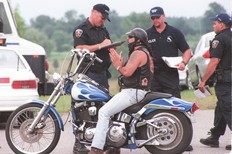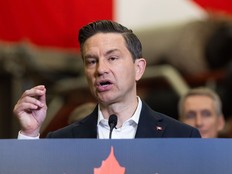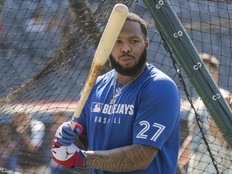'Learn by doing': How co-ops and internships shape medical professionals and healthcare
There’s a significant difference between reading a book and knowing what the lived experience feels like when it comes to treating patients.

Article content
If you’ve ever watched a hospital drama, such as Grey’s Anatomy, you may have thought to yourself how different it must be in the real world for medical students. While TV is dramatized to keep you on the edge of your seat, they do get some things right, one being that, to be successful as a medical professional, you have to learn on the job.
To do that, co-ops and internships, which some may think of as the same thing but aren’t, are required. An internship is often an unpaid short-term position within an industry that allows individuals to gain work experience. In contrast, a co-op enables people to function fully as employees while continuing to advance their skill set by learning from professionals during their academic studies.
Recommended Videos
Dr. Teresa Chan, Dean and Vice President, Medical Affairs, at the Toronto Metropolitan University (TMU) School of Medicine and emergency physician, sees these forms of study and learning as “much an art as it is a science.”
“You can’t learn how to be a doctor from reading textbooks,” she said. “You can’t even do it in the simulation lab, which is still hands-on. It’s something you have to learn by doing.”
For students aspiring to be the next generation of community caregivers, such as doctors, nurses, and other medical professionals who directly engage with patient care, hands-on learning is a vital component in becoming the best they can be and providing patients with optimal experiences and health outcomes.
And in Canada, it is the core of all medical education.
Sharanjeet Kaur, the Executive Director of TMU School of Medicine, notes that students need to be involved in communities to provide patients with the care they deserve, and that can only come from learning while working.
“It’s only in that experiential learning that you see the patient and the complexity that comes with that patient, that’s much more than just the illness that you may see or read about in a book,” she said.
Preparing students for the real world
There’s a significant difference between reading a book and knowing what the lived experience feels like. Kaur notes that medical textbooks can have the best of intentions when it comes to teaching students the complexities of medical care, but without real-world experience, it’s just not going to translate.
“When you’re actually interacting with the patient in real time, you’re going to meet the patient and you’re going to see all the complexity around, obviously the medical issues that they’re presenting with, but also the lived experiences that they bring with them and the intersectional aspects of their identity,” she said.
“You can kind of paint a picture (in case studies) but what you’re going to see is how, as a healthcare provider, do you engage with this person? What is your reaction, and what is their reaction back, and how do you then shift, and how do you ensure that you are evolving and doing what you need to meet the needs of the individuals?”
The individuality of the patient can also play a role when presenting with diseases, even if students have a high level of understanding of what a disease is, how people experience it, and what happens when it develops, as described in a textbook.
Essentially, students can spend hours in classes learning about the signs of a disease and how it presents in a patient, but without seeing that patient firsthand, it’s challenging to truly understand what that looks like and how to provide effective care.
“You have to actually see it when it’s actually manifesting, right? Just because you know that 13 per cent of people can do this or that or the other, or this is how 90 per cent of appendicitis presents, it’s that one case that doesn’t,” said Dr. Chan. “That’s what makes you a better physician.”
At TMU and medical schools across the country, there are typically three phases of learning: the first phase, which is mostly in-class preparation; the second phase, involving being put into clinical rotations; and the third phase, where you take everything you’ve learned and go for licensing.
Both the first and second phases involve some form of experiential learning. All three are vitally important, but the ones where a person gets to experience what it’s really like to work in medical care are what teach students how to become medical professionals through real-world exposure.
At TMU, putting students into the hands-on learning phase as early as possible, sometimes in their first year, was crucial to their overall curriculum because they understand that books can teach them what they need to know, but they cannot teach them how to treat, interact with, or provide care to patients.
“We want to ensure that our learners have access to high-quality primary care experiences,” said Kaur. “But it’s also because we want to ensure that everything that we’re doing, our learners are situated and learning to be responsive to the community.”
Learning variables you cannot find in a classroom
Community clinics and hospitals can often be unpredictable and diverse, in that it’s hard to expect who will come in and with what complaints, as well as how their personal background influences their presentation of diseases or receptivity to certain levels of care.
Many aspects of medical care also change and evolve over time, sometimes in real-time, making it difficult to set a standard in a textbook that applies to everyday practice when working with real-life patients.
For example, if someone has only learned how to work with one community, and another walks through their door, they will not have the hands-on experience to deal with their new, unforeseen task of treating a patient demographic with which they’re not familiar.
“It’s really important that it’s not just experiential learning in one kind of situation with one kind of population, but that our learners are actually being and having those experiences serving different kinds of communities knowing that your clinics or where you choose to work or where you end up working are going to vary depending on where you’re situated, where you happen to get a job,” said Kaur.
Throwing students into various communities so they can get an authentic taste of what it’s like to work with people from different walks of life isn’t just about patient care. The variable learning approach also allows people to learn about the communities they’re most passionate about, so that when they’re ready to hang up their learning coat, they are ready.
Dr. Chan notes that her own experience within different communities set her on a path to success, and that’s why these types of experiential learning opportunities are so important.
“It gives you the fabric of the community,” she said. “I don’t know if I’d be as comfortable in the job that I have now as an immersed job, and definitely may not have been as excited to be part of the Brampton community had I not already been there.”
Helping students keep up with an ever-changing world
With today’s advancements, medical students have a more dutiful task to keep up with what’s new, what’s changing, and how those evolutions in the healthcare industry can be used to improve patient care. Internships and co-op placements are viable resources for learning that provide students the opportunity to learn about what a textbook, which may have been printed only last year, has failed to include.
“The world is changing, and so the textbooks and anything written down will never change fast enough,” said Kaur. “Experiential learning actually puts and introduces the fact that innovation is here and you’re going to have to continuously innovate, whether that’s with technology or not with technology.”
Dr. Chan notes that at TMU, maintaining innovation through experiential learning practices is what will continue to create the next generation of medical providers who are ready, excited, and able to provide a level of care that can keep pace with an ever-evolving medical landscape.
“Being able to engage in experiential learning allows you to … become a really, really great diagnostician or clinician. You just need that exposure and that real-time experience.”










